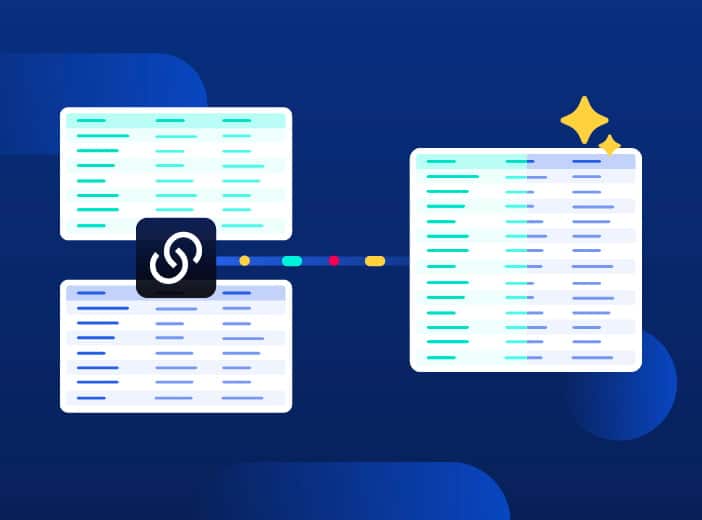Glossary
API (Application Programming Interface)
An API is an interface that allows computer programs to automatically interact under specified, documented conditions, without human intervention.
Application Programming Interfaces (APIs) are widely used across industries, but are normally invisible to users of the programs they connect. That’s because they work behind the scenes to connect real-time data with applications, web pages and devices.
Although the term remains relatively unfamiliar to the general public, APIs have a crucial role, especially in a world where data sharing and web-based applications are becoming dominant. So what is an API? What does it do? What are the different types of APIs?
What is an API?
API stands for Application Programming Interface. To best understand what it stands for, start by looking each of these three terms:
- Application: A service or a computer program that’s accessible via the internet. Applications include social networks, open data portals, weather services, or other business systems.
- Programming: The writing of code that enables a computer to perform certain tasks specified by the developer during the programming process.
- Interface: Where data or connections flow into and out of an application.
Based on these definitions, an API is an interface that allows computer programs to automatically interact under specified, documented conditions, without human intervention.
Companies, organizations, consumers, the media, and the general public all use APIs, either directly or indirectly via web applications and websites.
APIs can be designed in almost any programming language, including JavaScript, PHP, Ruby, Java, Python, and more. This means that they are available in a variety of formats.
What does an Application Programming Interface (API) do?
A universal app
APIs expose features (for example, real-time data streams, or maps) or data to designers and developers, who can then write programs that use this data or feature. When they do, it creates an interaction between the two programs.
APIs can be used by organizations of all sizes and across all sectors. They can take advantage of APIs to:
- Improve information sharing: APIs make it easier to share data, both in-house and externally, delivering a seamless, deeper experience.
- Become more adaptable: APIs can be adapted to any type of structure, especially those that produce large volumes of data. They can be tailored to meet the changing needs of the company and its market.
- Work together better: With seamless information sharing, all of the organization’s departments are able to communicate more effectively.
- Become more competitive: APIs support the creation of innovative services to beat the competition and recruit new talent.
- Strengthen system security: Organizations can choose to make their interface available to the public, to partners, or to employees only. It allows them to maintain control, and ensures system security.
In general, the more data you can collect and share, the higher the quality of the services you can provide, both internally and externally. This makes APIs an essential tool in creating data experiences that add value and engage users.
APIs in action
To illustrate the importance of APIs, here are a selection of use cases:
- Self-service bike rental: A municipality or city creates a dataset that lists all available self-service bicycles. The API then retrieves this real-time information and shares it with mobile apps, which might be created by the city itself or by a third-party mobility provider.
- Water distribution: Smart water meters are equipped with software that measures occupants’ consumption and detects any anomalies. All this information is then transmitted to the water company by the API. There’s no need to carry out manual meter readings, saving time and increasing transparency.
What are the different types of APIs?
APIs can be used in a variety of environments:
Private APIs
A private API can connect internal data sources to facilitate better information access between an organization’s data.
Private API use often requires a key (known as an API key) or an authentication token (such as a JSON Web Token). This key allows the interface to identify you as a user and grant access to its services. For example, on a website, it’s the data you use to access your customer account (your username and password). The API connects the website to the customer account.
Open APIs
Some organizations, such as municipalities, may choose to share their data with the general public by making it open data.
Any group that wants to offer new services based on this information can simply access it via an API, providing automatic updates as data changes.
Partner APIs
Partner APIs fall between the first two types. They can be shared with a company’s partners, such as its suppliers, or with other companies that provide complementary services. The idea is to generate new revenue streams or expand existing ones. Partner APIs can also help improve external collaboration through service sharing. And since API access is limited to partners only, data security is maintained.
APIs at Opendatasoft
Here at Opendatasoft, APIs are part of our toolkit. In fact, every dataset automatically generates its own structured API, as well as an explorer console and reference documentation.
This allows us to standardize the creation of data-driven products and services. Whenever a user consults a dataset, the API allows them to simply reuse the data on their website, or within another application. This makes APIs a core technological component of data sharing.
Learn more

Blog
Opendatasoft harnesses agentic AI to connect AI models to real-world data, driving greater business impact
What is agentic AI and how does it help increase data consumption? Our Q&A blog explains the current state of AI, and how Opendatasoft is innovating to drive forward its impact for customers.

Blog
Opendatasoft boosts data enrichment, even when using the largest reference sources
Enriching your data is a key step in creating relevant insights and analysis that drives value. However, when it comes to using massive reference sources such as national company databases, detailed weather data or geographic/administrative boundary datato enrich your data, technical limitations often become a challenge.

Blog
Successfully scaling data products – best practice from McKinsey
Data products are central to increasing data consumption across the organization. But how can you ensure your data product program delivers lasting value? We explore the latest best practice from McKinsey, designed to scale data product creation and usage.
